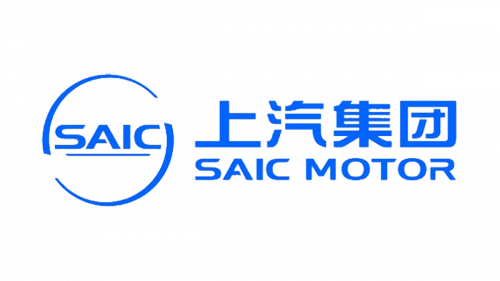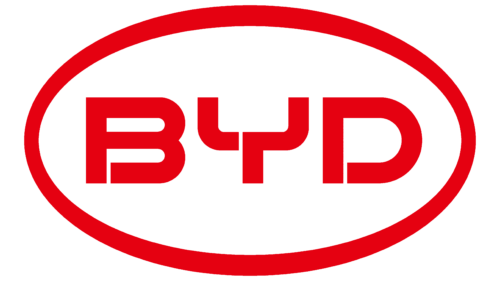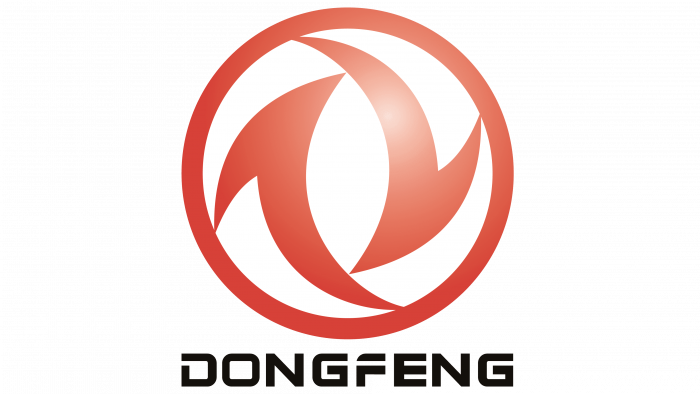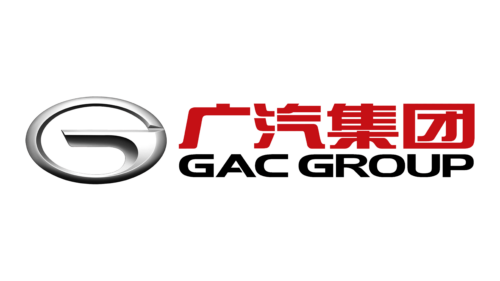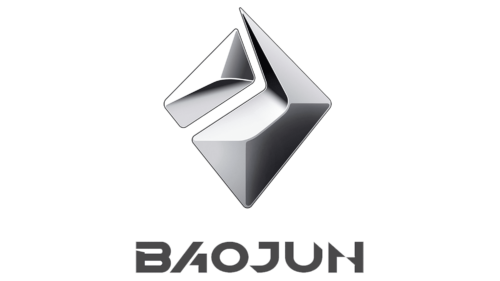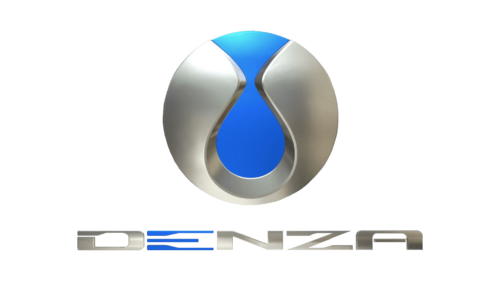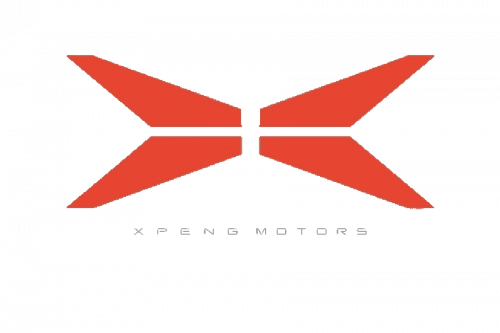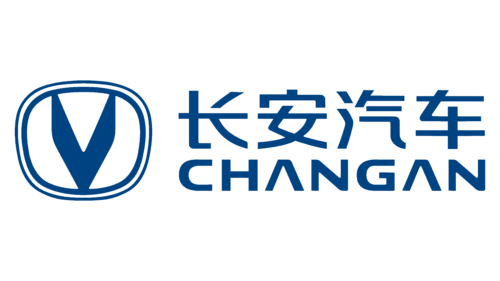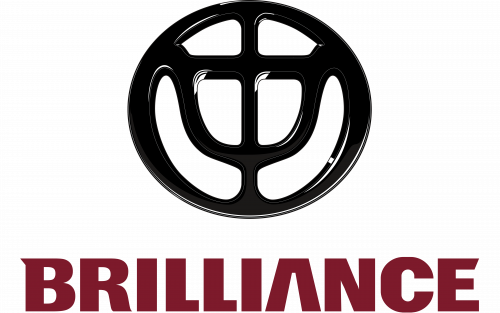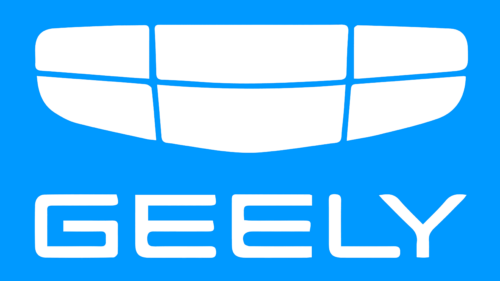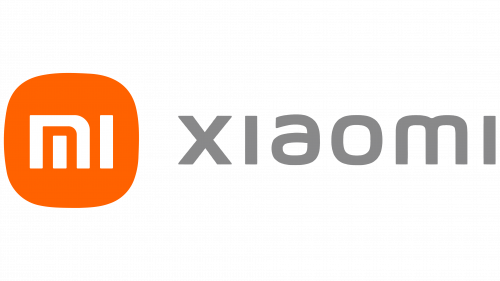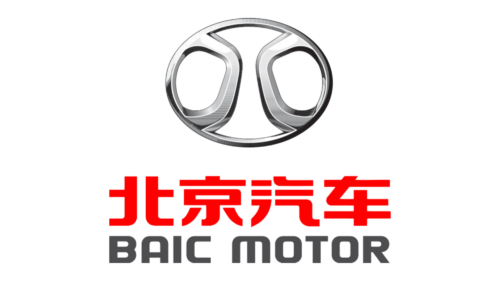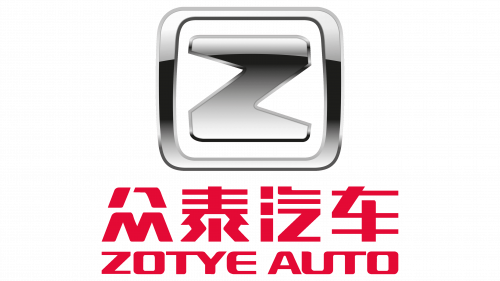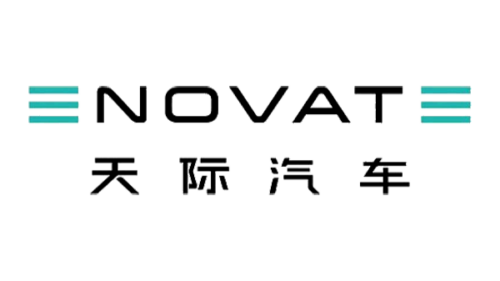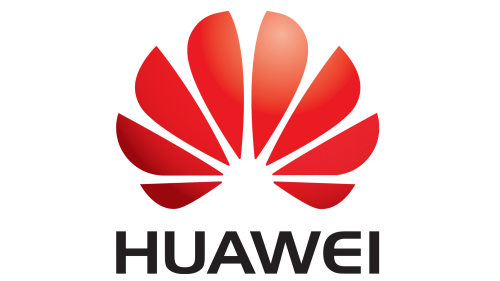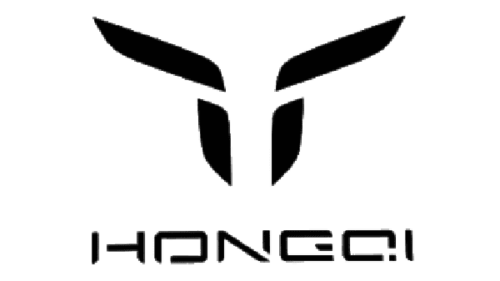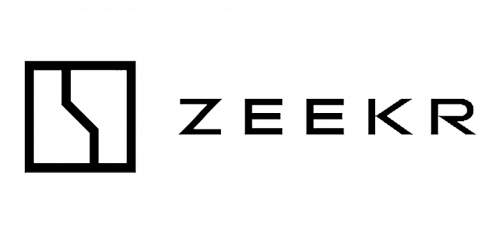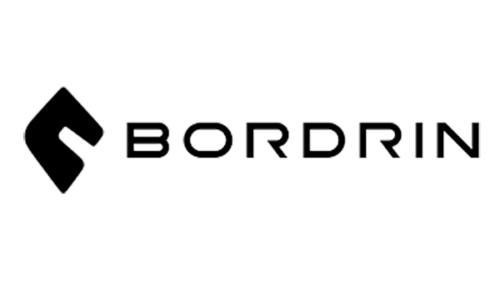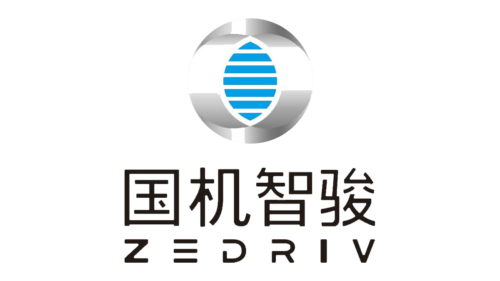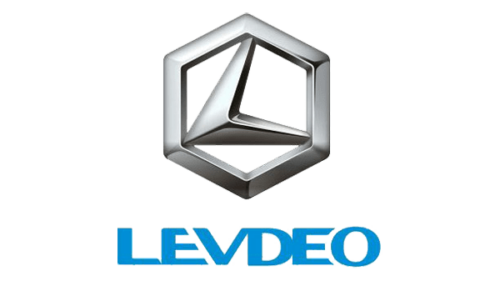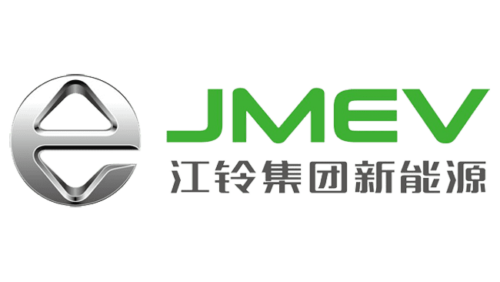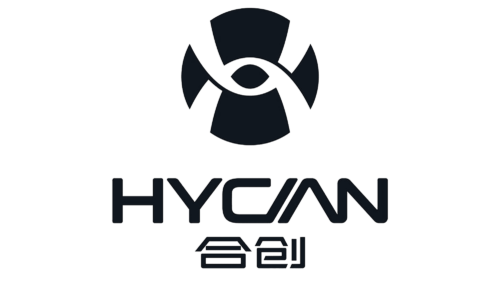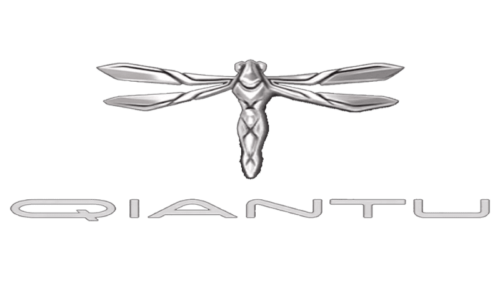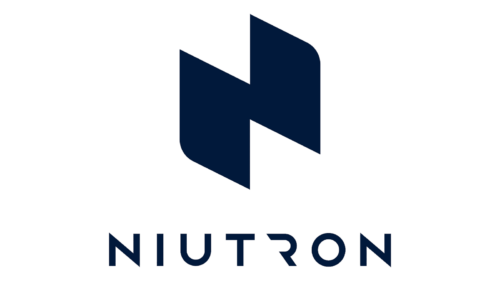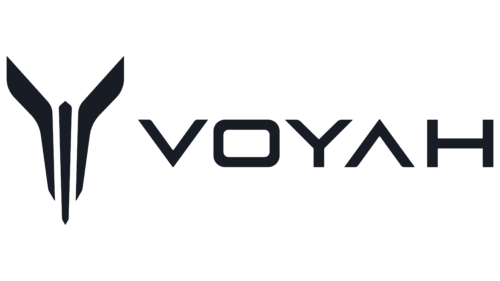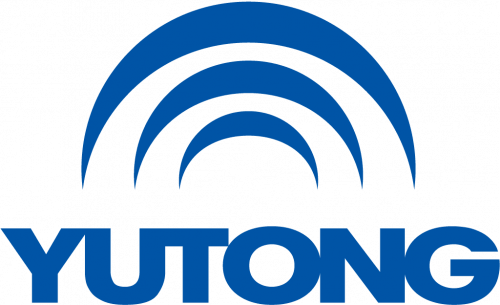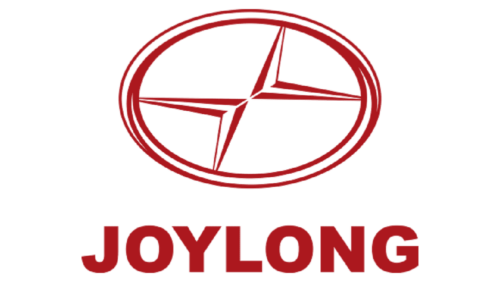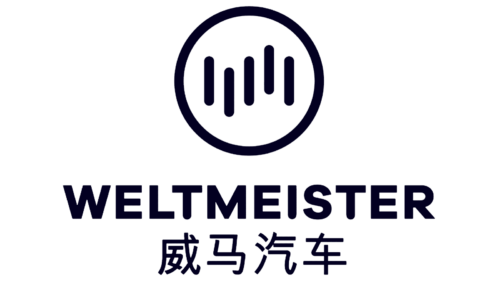The realm of automotive engineering is witnessing a paradigm shift. As the spotlight increasingly shines on sustainable transportation solutions, electric vehicles (EVs) have emerged as the torchbearers of this transformative era. Among the nations driving this change, China stands out, not just as a voracious consumer but as an innovator and pioneer in the EV landscape.
Historically known for its vast manufacturing capabilities, China is now transitioning from a global factory to a global innovator. This metamorphosis is particularly evident in the electric car sector, where Chinese brands are making global headlines, capturing market shares, and setting new standards in design, technology, and efficiency.
Yet, the story isn’t just about innovation and market dominance; it’s about resilience, adaptation, and the pursuit of a sustainable future. China’s dedication to electric transportation goes beyond commerce; it’s a commitment to an eco-friendly future and a testament to the nation’s vision for the next era of mobility.
In this exposition, we shall embark on an exploration into the heart of China’s electric car industry, highlighting the tales of homegrown brands that are not only revolutionizing transport within the Great Wall but are extending their influence globally. Venture with us on this electric odyssey, a narrative filled with ambition, innovation, and the promise of a greener tomorrow.
NIO
| Pros | Cons |
|---|---|
|
|
NIO isn’t just an electric car manufacturer; it’s a reflection of China’s ambition to redefine mobility for the future. The brand has embarked on a mission to blend high-end aesthetics with state-of-the-art technology. Their vehicles, such as the ES8 and EC6, aren’t just modes of transport—they’re experiences. These vehicles come embedded with NOMI, an AI-driven assistant that enhances the user experience. What truly sets NIO apart, however, is their philosophy towards battery management. Their revolutionary Battery as a Service (BaaS) concept not only tackles battery degradation issues head-on but also showcases a vision where EV ownership dynamics can radically change. Adding another feather to their cap, NIO Life, their lifestyle product line, aims at building a comprehensive ecosystem around their brand, enhancing the overall ownership experience.
Great Wall Motors (GWM)
| Pros | Cons |
|---|---|
|
|
Delving into the world of electric mobility, GWM hasn’t just transitioned; it has transformed. With the ORA series, they’ve married their expertise in robust vehicle design with an environmentally-conscious ethos, resulting in vehicles that are both distinctive and reliable. Beyond just vehicles, GWM is keen on crafting a narrative around green mobility. Their considerable R&D investments aren’t just about improving vehicular performance but about ensuring that every facet of the vehicle, from design to disposal, is sustainable. GWM’s international endeavors are also noteworthy. Their strategy isn’t about mere market expansion; it’s about sharing their unique perspective on EVs with the world.
SAIC Motor Corporation (SAIC)
| Pros | Cons |
|---|---|
|
|
As a stalwart in China’s automotive landscape, SAIC’s foray into the electric segment has been nothing short of remarkable. Vehicles like the Roewe Marvel X don’t just check the boxes for performance and design; they’re trailblazers, setting new industry standards. SAIC’s collaborative spirit is another distinguishing factor. While their partnerships with global automotive giants offer them a wealth of technical expertise, they, in return, bring to the table deep insights about the rapidly evolving Chinese EV market—a synergy that benefits all. Their holistic approach to sustainability is commendable. For SAIC, it’s not just about creating electric vehicles; it’s about pioneering a movement that champions eco-consciousness at every step.
BYD
| Pros | Cons |
|---|---|
|
|
BYD’s journey from a battery manufacturer to an EV powerhouse is a testament to their adaptability and vision. Their deep roots in battery technology provide them with an unparalleled advantage, evident in innovations like the Blade Battery. But beyond just technical prowess, BYD’s essence lies in their holistic approach to mobility. Their range isn’t limited to just personal cars; it spans buses, monorails, and more, indicating a vision where entire cities are powered by clean energy. Their commitment to vertical integration isn’t just a business strategy; it’s a quality promise, ensuring that every component of a BYD vehicle meets stringent standards. As they expand globally, BYD doesn’t just aim to sell cars; they aim to share a dream of a cleaner, greener future.
Dongfeng Motor
| Pros | Cons |
|---|---|
|
|
Hailing from the historic city of Wuhan, Dongfeng Motor is not just a representation of Chinese automotive prowess but also a symbol of the nation’s industrial spirit. While historically known for its range of diverse vehicles, Dongfeng’s leap into the electric domain speaks of a brand that is future-ready. Their electric vehicles aren’t mere adaptations of existing models; they’re designed from the ground up, embedding an essence of innovation at their core. Collaborative ventures, such as those with global giants like Nissan, have infused Dongfeng’s creations with an international touch, creating a blend of East meets West in terms of design and functionality. But the true essence of Dongfeng lies in its broader vision—to not only be a vehicle manufacturer but to actively shape the future landscape of green mobility worldwide.
GAC Group (Guangzhou Automobile Group)
| Pros | Cons |
|---|---|
|
|
From the bustling metropolis of Guangzhou emerges GAC Group, a brand that seamlessly amalgamates Chinese craftsmanship with global innovations. Their Aion series isn’t just about moving from point A to B—it’s about experiencing the future, today. A defining feature of GAC’s EVs is the integration of state-of-the-art AI capabilities, aiming to evolve vehicles into intelligent companions for their users. This techno-centric approach is bolstered by GAC’s expansive R&D endeavors that transcend traditional boundaries, encapsulating areas like autonomous driving and next-gen energy solutions. Through partnerships, notably with Toyota, GAC is not just producing vehicles; it’s carving a narrative for the future of mobility.
Baojun
| Pros | Cons |
|---|---|
|
|
Baojun, the fruit of collaborative genius between titans like SAIC Motor and General Motors, paints a vivid picture of what the future of accessible EVs can look like. Baojun’s story is not just about crafting vehicles; it’s about understanding the very heartbeat of the Chinese middle class and creating mobility solutions that resonate. Their E-series, while affordable, exudes a charm often reserved for premium segments. Inside every Baojun EV is a world of features that defy its price point, from connectivity solutions to safety tech, ensuring that every user gets a slice of the future without burning a hole in their pocket.
Denza
| Pros | Cons |
|---|---|
|
|
Emerging from a partnership between the legendary Daimler and China’s very own BYD, Denza is a beacon of luxury in the electric vehicle realm. Every aspect of a Denza vehicle, from its aerodynamic contours to its plush interiors, echoes a symphony of luxury and performance. But where Denza truly distinguishes itself is in the intricate details. The vehicles are not just designed; they’re sculpted, with every curve and edge serving both form and function. The fusion of German precision and Chinese efficiency is evident in every aspect, from the vehicle’s drive dynamics to its sustainable production processes. Driving a Denza isn’t just about transportation; it’s about making a statement—of style, luxury, and environmental consciousness.
XPeng
| Pros | Cons |
|---|---|
|
|
XPeng Motors represents the nexus of cutting-edge technology and automotive innovation in China’s burgeoning EV sector. This isn’t your conventional car manufacturer. With their roots deeply embedded in the tech ecosystem, XPeng’s vision leans toward creating intelligent vehicles for the future. Take, for example, their Navigation Guided Pilot (NGP) system: it’s not just about autonomous driving but weaving in real-world, real-time data to adapt and react dynamically. Their vehicles, such as the P7, aren’t mere electric cars but digital ecosystems on wheels, complete with AI voice assistants and a seamlessly integrated user interface. Beyond technology, XPeng places significant emphasis on community engagement, often involving their user base in product evolution, reflecting a customer-centric approach rarely seen in traditional automakers.
Li Auto
| Pros | Cons |
|---|---|
|
|
In a world increasingly veering towards pure electric solutions, Li Auto offers a pragmatic bridge. Their extended-range electric vehicles are a testimony to the company’s insightful understanding of current market apprehensions. The hybrid approach, as seen in their Li ONE model, isn’t just about providing an additional fuel option; it’s a nuanced solution addressing China’s diverse geographic and infrastructural challenges. The in-car experience in a Li Auto vehicle is meticulously crafted, right from the ergonomics to the user interface, reflecting a marriage of traditional automotive excellence and modern digital innovation. As the brand grows, its commitment to sustainability, combined with real-world practicality, is setting a unique benchmark in the EV landscape.
Changan
| Pros | Cons |
|---|---|
|
|
Changan‘s transition from a traditional automaker to a significant player in the EV sphere showcases its adaptability and forward-thinking approach. Their deep-rooted experience in car manufacturing gives them an edge in understanding the nuances of what drivers seek. This is beautifully merged with their push towards green tech. The BlueCore powertrain technology, for instance, underscores Changan’s dual commitment to performance and eco-friendliness. Their global R&D network isn’t just about creating vehicles; it’s a think-tank that envisions the future of mobility, taking into account changing urban structures, environmental challenges, and evolving consumer behaviors. The blend of Changan’s rich heritage with its ambitious vision ensures its EVs are both trusted and trailblazing.
CATL
| Pros | Cons |
|---|---|
|
|
CATL is the unsung hero behind the EV revolution. While not in the limelight like car manufacturers, this battery behemoth’s contributions to the electric mobility world are indispensable. As a tech innovator, CATL doesn’t just produce batteries; they redefine their very architecture. Their push towards solid-state batteries and other advanced technologies promises a future where EVs can potentially outperform and outlast their gasoline counterparts. Collaborations with a vast array of global carmakers provide CATL with diverse insights, allowing them to tailor solutions that cater to varied requirements. Their rigorous research is geared not just towards enhancing energy density but also ensuring sustainability from extraction to recycling. As the heart of the EV, CATL’s batteries are being sculpted to be more than power sources—they’re envisioned as dynamic entities that adapt, evolve, and endure.
Aiways
| Pros | Cons |
|---|---|
|
|
Emerging from Shanghai’s bustling tech landscape, Aiways is not just another name in the automobile sector; it’s a statement of intent in the ever-evolving world of electric mobility. More than just creating EVs, Aiways’ ethos is centered around ‘intelligent driving’. The U5 SUV, for instance, is not just a car but a synthesis of art and science. Delving deeper, Aiways’ focus isn’t restricted to just the vehicles but also extends to the driving experience. Their modular MAS platform, while illustrating engineering brilliance, also offers a canvas for future mobility solutions. International aspirations have always been a cornerstone of Aiways’ strategy, with a clear aim to influence global driving norms, intertwining sustainability with elegance.
FAW Group
| Pros | Cons |
|---|---|
|
|
Founded in the 1950s, FAW Group isn’t just a company but an integral chapter in China’s automotive story. Pivoting to the EV era, FAW showcases how tradition can beautifully coalesce with innovation. Vehicles like the Bestune T77 EV encapsulate this philosophy, merging decades of automotive wisdom with the latest in electric tech. FAW’s collaborations, particularly with international giants, bring a duality to their approach, blending global expertise with indigenous innovation. Their vision for the future is expansive, seeing beyond mere vehicles to a realm where cities breathe freely, roads whisper, and mobility is an eco-conscious delight.
Brilliance Auto
| Pros | Cons |
|---|---|
|
|
From the streets of Shenyang to global highways, Brilliance Auto has carved a niche for itself, particularly with its association with brands like BMW. But when it comes to electric, Brilliance shines even brighter. Their luxury experiences, honed over the years, take on a green hue with models like the V7. What sets Brilliance apart is their 360-degree view of electric mobility. It’s not just about crafting cars, but about envisioning a world where every touchpoint, from battery inception to its final discharge, is optimized, efficient, and sustainable. In Brilliance’s electric dreams, luxury doesn’t compromise the environment; it complements it.
Geely
| Pros | Cons |
|---|---|
|
|
Geely’s journey is an embodiment of transformation. From a modest start in the 1980s to being a global automotive powerhouse, their trajectory has been remarkable. Electric mobility, for Geely, is more than a trend; it’s a mission. Their models, such as the Emgrand EV, are not just vehicles but statements of intent. Geely’s global integrations, be it acquiring Volvo or investing in Daimler, serve a dual purpose: imbibing global best practices and infusing them with a unique Geely touch. Looking beyond traditional paradigms, Geely is also venturing into realms previously uncharted by carmakers, from exploring the skies with flying cars to gazing at the stars with satellites. For them, the future isn’t just electric; it’s boundless.
Chery
| Pros | Cons |
|---|---|
|
|
Established as a cornerstone of the Chinese automotive industry, Chery Automobile Co. has always been a vanguard of change and innovation. In the realm of electric vehicles (EVs), Chery has emerged as a beacon of adaptability. Their approach isn’t just about creating EVs; it’s about reshaping the way people perceive mobility. The Chery eQ, for instance, has managed to defy the traditional notion that affordability might entail a compromise on luxury or performance. With a blend of minimalist design and advanced tech interfaces, Chery’s EVs stand out as vehicles of the modern urban dweller. The brand’s commitment to eco-friendly manufacturing practices, combined with its aspirations to delve deeper into AI-powered driving solutions, positions Chery as not just an automaker but as a holistic mobility solutions provider.
Byton
| Pros | Cons |
|---|---|
|
|
In the ever-evolving tapestry of the Chinese EV sector, Byton emerges as a brand that envisions the car of the future as more than a mere transport vessel. It envisages it as a next-gen digital cocoon. Step inside the M-Byte, Byton’s avant-garde SUV, and one is immediately greeted by a 48-inch display—a vivid reflection of Byton’s aspiration to merge the realms of digital connectivity and automotive luxury. It’s not just about driving; it’s about experiencing a digital journey. Each Byton vehicle is a symphony of high-end tech, advanced sensors, cameras, and plush interiors, making it a nexus of comfort and innovation. They’re not just crafting cars; they’re sculpting the future of digital mobility.
Xiaomi
| Pros | Cons |
|---|---|
|
|
For most, Xiaomi‘s name resonates with cutting-edge smartphones and groundbreaking consumer electronics. Their audacious leap into the EV market is emblematic of a brand that refuses to be pigeonholed. Leveraging their unparalleled expertise in creating user-centric software ecosystems, Xiaomi is on a quest to redefine the EV landscape. Their vision is a car that’s more than a car—it’s an extension of one’s digital self. From AI-driven voice assistants to AR-powered displays and a seamless melding with the Xiaomi universe of devices, their EV blueprint is both ambitious and transformative. And considering their prowess in battery technology, one can only anticipate an EV that pushes boundaries in power efficiency and longevity.
BAIC
| Pros | Cons |
|---|---|
|
|
BAIC’s journey as a luminary in the Chinese automotive sector is a narrative of evolution and foresight. As a stalwart state-owned entity, its transition into the EV domain was both methodical and impactful. The BAIC EC-Series, for example, isn’t just a car; it’s a statement—a testament to BAIC’s commitment to ushering in a green automotive revolution. Beyond the sheer aesthetics and build, BAIC EVs are synonymous with reliability and endurance, addressing range anxiety head-on. Furthermore, with autonomous driving on its radar, BAIC isn’t just aiming for the skies; it’s reaching for the stars. Backed by unwavering governmental support and global collaborations, BAIC is not just shaping the EV narrative in China but is setting benchmarks for the world to follow.
Zotye
| Pros | Cons |
|---|---|
|
|
Founded in the early 2000s, Zotye might not have the legacy of older auto manufacturers, but it has a fervent dedication to the future – the electric future. Tengtian, one of Zotye’s flagship EVs, showcased how the company is targeting the urban dwellers seeking style without the hefty price tag. What sets Zotye apart, particularly in the crowded Chinese EV market, is its strategic pricing. They’ve mastered the art of producing vehicles that, while affordable, don’t compromise on the fundamental aspects of safety, reliability, and comfort. This dedication to balancing cost and quality is a testament to Zotye’s understanding of its domestic market. In terms of technological innovations, Zotye is pushing forward with improvements in battery durability and efficiency, eyeing a future where their cars can travel longer distances on a single charge, meeting the evolving needs of their consumer base.
Enovate
| Pros | Cons |
|---|---|
|
|
The electric dreams of Enovate Motors go beyond just replacing gasoline with electricity; they envision transforming the entire driving experience. Their cars, like the ME7, are not just modes of transport; they’re a blend of luxury, high-end tech, and performance that can give more established brands a run for their money. One might argue that Enovate is to the EV world what some luxury brands are to the traditional car market – they’re not just selling a vehicle; they’re selling an experience. With a keen eye on international markets, Enovate is also focusing on ensuring that their vehicles meet global standards. This international vision, coupled with a commitment to cutting-edge research and development, means that Enovate isn’t just content with dominating the domestic market; they have their eyes set on the global stage.
Huawei
| Pros | Cons |
|---|---|
|
|
Huawei’s journey from telecommunications to EVs is a testament to their adaptability and forward-thinking approach. Their electric vehicles are an embodiment of the “smart” era, with an emphasis on connectivity, automation, and integration. It’s no longer just about getting from point A to point B; it’s about doing so in the most technologically advanced way possible. Huawei is essentially redefining what a car can be. With their expertise in 5G, their vehicles promise to be more than just modes of transport – they’re set to become integrated hubs of information and entertainment. Moreover, their commitment to research means that with every passing year, we can expect more advanced, more integrated, and more innovative offerings from Huawei’s EV segment.
Wuling
| Pros | Cons |
|---|---|
|
|
Wuling’s story in the EV market is a masterclass in understanding consumer demand. Recognizing the urbanization trend and the younger generation’s gravitation towards compact and eco-friendly solutions, Wuling brought the Hong Guang Mini EV to life. This vehicle, with its blend of practicality and affordability, is reshaping urban mobility in China. But Wuling isn’t just about compact cars; they’re about crafting solutions tailored to specific market segments. Their strategic collaboration with giants like General Motors provides them with a wealth of technical expertise, ensuring that their vehicles, no matter how affordable, adhere to global standards of safety and efficiency. With a finger on the pulse of consumer needs and the technical prowess to deliver, Wuling stands as a beacon of innovation in the Chinese EV landscape.
Hongqi
| Pros | Cons |
|---|---|
|
|
Hongqi, which means “Red Flag”, is not just any car brand in China; it’s a symbol of national pride and a testament to China’s rich automotive history. Introduced in 1958, Hongqi initially catered to the elite and dignitaries, producing cars that became emblematic of China’s political and cultural landscape. Today, Hongqi’s foray into the electric vehicle domain is a blend of rich legacy and future-forward technology. What makes Hongqi’s electric vehicles stand out is their ability to seamlessly integrate a historic aesthetic into modern designs. This means while their vehicles boast the latest in EV tech, their design often includes regal elements and ornate touches harkening back to an era of traditional Chinese opulence. Additionally, Hongqi’s focus on top-notch in-car luxury ensures that while the vehicle is electric at heart, the driving experience remains uncompromisingly plush and premium.
Leapmotor
| Pros | Cons |
|---|---|
|
|
Emerging from the bustling tech hub of Hangzhou, Leapmotor is not just another EV brand; it’s a beacon of China’s tech-driven innovation in mobility. As a newcomer, Leapmotor had the advantage of a fresh slate, and they’ve leveraged this to prioritize integrating avant-garde technologies into their vehicles. Beyond the usual metrics of range and speed, Leapmotor’s cars are defined by their intelligence. This is evident in their deep integration of AI, which personalizes the driving experience, and their push for creating vehicles that feel more like tech gadgets. Their sleek, ultra-modern design philosophy eschews the conventional, often giving their cars a concept-like appearance. With Leapmotor, the journey is not just about reaching a destination; it’s about interacting with a smart, responsive, and futuristic machine every step of the way.
Zeekr
| Pros | Cons |
|---|---|
|
|
Under the umbrella of the automotive giant Geely, Zeekr is not just an EV brand; it’s a statement of intent. In a market crowded with electric vehicles, Zeekr positions itself at the intersection of adrenaline-pumping performance and uncompromised luxury. These vehicles are not designed for the faint-hearted; they cater to the enthusiast who wants the thrill of speed but in an environmentally-conscious package. Their interiors, decked out with the finest materials and advanced tech interfaces, exude a sense of exclusivity. Every element, from the stitching on the seats to the intuitive user interfaces, showcases Zeekr’s commitment to providing a top-tier driving experience. It’s not just about electric driving; it’s about redefining what performance in the EV space should feel like.
Hozon Auto
| Pros | Cons |
|---|---|
|
|
Hozon Auto, originating from Jiaxing, offers a refreshing perspective in the EV domain. In a world where the conversation around electric vehicles is often dominated by speed, range, or luxury, Hozon plants its flag firmly in the realm of holistic sustainability. But it doesn’t stop at just producing electric vehicles. Hozon’s approach to sustainability encompasses every aspect of the vehicle’s lifecycle. This means sourcing eco-friendly materials, optimizing manufacturing processes, and even considering end-of-life vehicle recycling. Their commitment to affordability ensures that green mobility isn’t just a privilege of the few but is accessible to many. With Hozon, owning an EV becomes more than a statement of eco-consciousness; it’s a comprehensive approach to sustainable living.
Aoxin
| Pros | Cons |
|---|---|
|
|
In a nation where EV manufacturing has become highly competitive, Aoxin rises above by carving a niche for itself as the purveyor of compact electric mobility. Tailored especially for city dwellers who navigate through congested urban jungles daily, Aoxin’s designs challenge conventional wisdom. Despite their petite exterior dimensions, the genius of Aoxin’s design engineering shines brightly with remarkably roomy interiors. An interesting observation is the brand’s philosophical inclination towards minimalist elegance. Instead of overwhelming users with redundant features, Aoxin focuses on the essentials. The streamlined dashboard interfaces, for example, embody a “less is more” ethos. When it comes to battery tech, Aoxin adopts a pragmatic approach. While they might not promise cross-country ranges, their swift charging capabilities and dependable battery lifecycle certainly make city commutes hassle-free.
Bordrin
| Pros | Cons |
|---|---|
|
|
Bordrin is not merely an electric vehicle manufacturer; it’s a statement of opulence electrified. With an ambition to lock horns with the titans of the luxury EV sphere globally, Bordrin’s masterstroke lies in its fusion of opulence, cutting-edge tech, and eco-friendly propulsion. The vehicles rolling out of Bordrin’s facilities are almost an art form — an interplay of avant-garde designs and technological marvels. Their autonomous driving features are not just an add-on but a harmonious integration that promises both convenience and safety. Delving into their infotainment system feels like an expedition into the future, thanks to its vast array of functionalities. Performance and endurance are also Bordrin’s strong suits, with certain models boasting ranges that could turn even skeptics into EV evangelists.
Changfeng Motor
| Pros | Cons |
|---|---|
|
|
Transitioning from a history drenched in conventional combustion engineering to pioneering electric innovations, Changfeng Motor’s journey is emblematic of evolution. Their rich tapestry of automobile craftsmanship now dovetails with the technological zeitgeist of the 21st century. Changfeng’s EVs are like steel-clad warriors — resilient and dependable. This resilience stems from the brand’s legacy in crafting robust SUVs and trucks. Beyond the allure of electric propulsion, Changfeng embeds an environmental conscience into their manufacturing ethos, championing sustainable materials and eco-friendly practices throughout the production cycle. Their commitment to integrating advanced connectivity solutions further augments the holistic driving experience they offer, making them not just vehicles, but companions on the road.
Zedriv
| Pros | Cons |
|---|---|
|
|
In the electrified automotive tapestry of China, Zedriv embroiders its story with threads of audacity and innovation. Clearly tailored for the digital-native generation, Zedriv vehicles pulsate with youthful energy. Beyond just being modes of transportation, they’re envisioned as canvases for drivers to express their unique identities. From audacious exterior palettes to avant-garde design contours, Zedriv cars are undeniably head-turners. Their tech suite is an ode to the future, incorporating AI-enhanced functionalities that continually adapt and evolve, offering a tailored driving ambience. Zedriv’s unwavering focus on safety is commendable. Their vehicles, armed with a plethora of advanced driver assistance tools powered by AI and machine learning algorithms, not just respond to threats but preemptively act to mitigate them. As a beacon of innovative spirit, Zedriv truly encapsulates the future-forward vision of Chinese EV craftsmanship.
Levdeo
| Pros | Cons |
|---|---|
|
|
In the realm of electric vehicles, Levdeo has emerged as a master of urban-centric design, constantly resonating with city dwellers. Beyond just compact designs suitable for tight urban spaces, Levdeo champions vehicles that can maneuver with agility in dense traffic, a distinct advantage when driving in bustling Chinese cities. The brand’s investment in advanced tech is evident in its intuitive interfaces and digital touchpoints in the car, providing a symbiotic relationship between the car and its driver. Beyond basic navigation, their vehicles harbor a suite of connectivity solutions, making it easier for drivers to integrate their digital lives with their commutes. Notably, Levdeo’s dedication to enhanced battery performance has led them to collaborate with tech giants and energy firms, searching for that elusive blend of fast charging and longevity.
JMEV
| Pros | Cons |
|---|---|
|
|
JMEV, stemming from the prestigious lineage of Jiangling Motors, understands the heartbeat of automobile enthusiasts. Their electric cars don’t merely drive; they sprint, cruise, and glide, showcasing varied driving modalities. JMEV’s EVs are often compared to high-performance traditional cars in terms of acceleration and handling. Delving into the safety aspect, JMEV is pioneering predictive safety mechanisms, where the vehicle anticipates potential hazards and prepares or even reacts accordingly. The versatility of JMEV is not just in its diverse range but also in its adaptability. Each vehicle, be it a sedan or a bus, is infused with a unique DNA, giving it a distinct character and drive experience.
IM Motors
| Pros | Cons |
|---|---|
|
|
The journey of IM Motors (formerly Aiways) is a testament to the evolving ethos of automobile manufacturing. Their sustainability narrative is not just a feature but is intricately woven into every facet of the vehicle’s lifecycle, from design to disposal. An interesting aspect is how IM Motors integrates nature into their vehicles. Some models have used plant-based materials, reducing the carbon footprint and providing a unique aesthetic appeal. The semi-autonomous feature of their vehicles is just the beginning. The brand envisions a future where the car becomes an extension of one’s living space, potentially driving itself as passengers work, relax, or even sleep. As IM Motors eyes the global market, it’s adapting its designs and tech to resonate with international tastes and preferences.
Hycan
| Pros | Cons |
|---|---|
|
|
Hycan’s alliance with both GAC Group and NIO is a powerhouse combination that exudes luxury and advanced tech. While many luxury cars emphasize the look and feel, Hycan dives deep into the sensory experience of driving. The ambiance inside a Hycan vehicle, with mood lighting, superior sound isolation, and plush seating, transforms commuting into a lavish experience. Their battery tech doesn’t just focus on range but also on consistent performance. Hycan vehicles are optimized to provide the same luxurious experience whether the battery is full or nearing its end. The connected car concept of Hycan is groundbreaking. Imagine your vehicle preparing for your arrival by communicating with your smart home, adjusting temperatures, and setting up ambient lighting based on your mood or time of day. Such is the vision Hycan is steering towards.
Singulato
| Pros | Cons |
|---|---|
|
|
Singulato, emerging from the world’s largest automotive market, has made significant strides in carving out a niche for itself. Unlike other EV manufacturers, Singulato’s approach isn’t just about zero emissions or speed; it’s about creating a holistic driving environment. Think of Singulato vehicles as futuristic tech hubs on wheels. Equipped with cutting-edge AI and IoT features, they are always learning, always adapting, ensuring the driving experience is as intuitive as it is exciting. The interior design of Singulato cars, often overlooked in the auto industry, has been crafted to offer a harmonious blend of luxury and technology. With ambient lighting that reacts to the driver’s mood and interface controls that seem to anticipate your every need, Singulato is truly pushing the boundaries of what we expect from a car.
HiPhi
| Pros | Cons |
|---|---|
|
|
When it comes to HiPhi, the brand seems to ask one central question: “Why just drive when you can connect?” This ethos is embedded in every facet of their designs. Beyond the luxury and attention to detail, which rivals top-tier European brands, HiPhi focuses on hyper-connectivity. The Vehicle-to-Everything (V2X) system isn’t just about communication with other vehicles or infrastructures, but it’s about integrating the car into the larger digital ecosystem of a smart city. Imagine a world where your car communicates with your home, your office, and even your favorite coffee shop, preparing each space for your arrival. HiPhi is not just crafting vehicles but pioneering a lifestyle.
Qiantu Motor
| Pros | Cons |
|---|---|
|
|
Qiantu Motor’s allure lies in its audacity. In a market where many are content with producing family-friendly sedans, Qiantu dreams of electric-powered speed demons tearing down highways. Their flagship model isn’t just an electric car but a testament to the untapped potential of electric performance. However, performance isn’t their only forte. Qiantu’s modular design isn’t just about aesthetics or personalization; it’s a nod to sustainable consumption. In a world where technology becomes obsolete in a few years, the ability to upgrade and modify parts of one’s vehicle ensures longevity and reduces waste. Qiantu, in essence, is setting a new standard for sustainable high performance.
Zinoro
| Pros | Cons |
|---|---|
|
|
Zinoro might be the offspring of a collaboration between Brilliance Auto and BMW, but it has matured to have its distinct voice in the EV chorus. While its German lineage ensures engineering precision and reliability, its Chinese roots make it adaptive to one of the most challenging urban environments in the world. Zinoro doesn’t just design cars; it designs urban mobility solutions. Compact yet spacious interiors, agility coupled with stability, and a keen sense of aesthetics make Zinoro vehicles the quintessential urban companion. Furthermore, Zinoro’s commitment extends beyond the sale of the vehicle. They envisage creating an ecosystem where owning an EV is not a challenge but a delight, be it through efficient after-sales service or an expansive charging network.
AITO
| Pros | Cons |
|---|---|
|
|
AITO, having etched its identity as an avant-garde player in China’s electric vehicle landscape, is the embodiment of futuristic thinking. A defining trait of AITO’s models is its deep integration of next-gen AI capabilities. These aren’t just any cars; they’re virtually a co-pilot. Their advanced algorithms offer bespoke driving profiles, understanding and predicting user preferences, from seating adjustments to preferred routes. Furthermore, AITO’s environmental ethos isn’t just about zero emissions. The company champions green manufacturing, sourcing materials that are both recycled and recyclable. The detailing in their cabins, be it bamboo trim or fabric woven from recycled plastics, underscores their commitment to an eco-centric vision.
Niutron
| Pros | Cons |
|---|---|
|
|
As a rising star in China’s EV sector, Niutron’s emphasis on groundbreaking battery tech sets it apart. Whereas most electric brands might prioritize aesthetics or onboard tech, Niutron’s R&D shines a spotlight on charge dynamics. Touted for some of the industry’s fastest charge times, they’re addressing one of the primary concerns of potential EV adopters – range anxiety. Their cutting-edge thermal regulation systems guarantee that the batteries don’t just have an extended life but maintain peak performance regardless of climatic fluctuations. From a design perspective, Niutron elegantly balances a sleek minimalist aura with nuanced futurism, challenging and reshaping conventional EV designs.
Min’an
| Pros | Cons |
|---|---|
|
|
Min’an is the embodiment of electric luxury in China’s burgeoning EV market. Deliberately sidestepping the crowded mid-range segment, Min’an caters to the connoisseurs of luxury. Step inside one of their vehicles, and you’re ensconced in opulence: plush leather seats that feel like they’ve been tailor-made, meticulous handcrafted details, and dashboard trims crafted from the finest woods. But Min’an’s vehicles aren’t just about static luxury; they’re dynamic technological marvels. They’ve melded high-end tech with comfort, boasting AR-infused navigation, intuitive voice commands, and mood-sensitive ambient lighting, making every drive a sensorial symphony.
Fukang
| Pros | Cons |
|---|---|
|
|
Evoking a rich blend of yesteryear’s charm with today’s technological prowess, Fukang is a love letter to classic automobile aficionados. Their design philosophy is a refreshing detour from the contemporary, with models exuding vintage vibes reminiscent of the golden automotive age. But don’t let the classic exterior mislead you; Fukang’s innards are as 21st century as they come. Their signature is a sophisticated regenerative braking mechanism, which not only stretches the vehicle’s range but offers a driving experience that’s tactile and immediate. For those with a penchant for nostalgia yet unwilling to compromise on the latest tech, Fukang seamlessly bridges the past with the present.
Deepal
| Pros | Cons |
|---|---|
|
|
The electric car landscape is teeming with competition, but Deepal carves a niche with its unique approach to personalization. Their vehicles are not just transport mediums but cohabitants. The AI technology they integrate isn’t just a tool, but a companion, making the car “know” its driver in intimate detail. As the vehicle “learns”, it adjusts temperature preferences, seat positioning, and even driving modes based on the driver’s habits. What truly differentiates Deepal is their relentless focus on the merger of technology and tradition. For instance, while the AI might make the car futuristic, their interiors echo China’s rich history and artisanship – a beautiful blend of the past and future.
Voyah
| Pros | Cons |
|---|---|
|
|
Voyah, branding itself as the epitome of elegance in the EV world, marries luxury with performance. The term ‘range anxiety’ is virtually non-existent in the vocabulary of a Voyah driver. They’ve conquered this common EV concern with breakthrough battery technology that ensures extended travel distances. But it’s not just about the journey’s length but the quality of it. Each Voyah vehicle feels like a moving art piece with its pristine design. The brand, while looking ahead, is deeply respectful of its roots. Their sustainability initiatives resonate deeply, emphasizing that the drive towards the future shouldn’t damage the very world we live in.
Sehol
| Pros | Cons |
|---|---|
|
|
When it comes to Sehol, think of functionality infused with emotion. At the heart of Sehol’s philosophy lies the ordinary person with everyday needs. Their cars might be electric, but they pulsate with the heartbeat of millions who seek reliability above all else. Compact and designed for urban jungles, they are a boon for city dwellers navigating through cramped spaces. Beyond the car’s physical attributes, Sehol has successfully fostered a family-like community. The brand frequently organizes meet-ups, creating a platform where stories are shared and memories are forged. Owning a Sehol is not just about having a car, but being a part of a larger narrative.
Avatr
| Pros | Cons |
|---|---|
|
|
A symphony of technology and performance, Avatr is the dream of tech enthusiasts turned reality. Every curve, every interface, and every sound in their cars screams innovation. They challenge the status quo, showing the world that electric doesn’t mean slow. Their vehicles, boasting speeds comparable to high-end sports cars, break the stereotype of the ‘modest’ electric car. And it isn’t just about speed. Their in-car technology ensures drivers are equipped with the latest advancements, from state-of-the-art autonomous features to software updates that keep the car ever-evolving. Avatr believes in an ecosystem where buying a car is the beginning of a journey filled with impeccable service and constant evolution.
Lichi
| Pros | Cons |
|---|---|
|
|
Lichi’s vision is grounded in pragmatism. They understand the urban challenges and design EVs that are agile, compact, yet efficient. While many brands focus on range, Lichi’s standout feature is its ‘Urban Boost’ mode – a drive setting specifically optimized for stop-and-start city traffic, ensuring maximum battery conservation. The brand also embraces a socio-cultural angle. Beyond their communal Lichi Lounges, they’ve introduced ‘Lichi Journeys’ – curated road trips for Lichi owners, spotlighting offbeat destinations and fostering a sense of community adventure. Their vehicles, while compact, don’t compromise on storage, featuring ingenious solutions like under-seat compartments and retractable boot spaces.
Yutong
| Pros | Cons |
|---|---|
|
|
Transitioning from a traditional bus manufacturer to an EV specialist, Yutong encapsulates the essence of green urban mobility. Their electric buses, designed with cityscapes in mind, showcase sleek aesthetics combined with functional brilliance. A patented feature in Yutong buses is the ‘Eco-Airflow System’, which not only purifies air but also regulates internal temperatures, reducing the need for energy-intensive air conditioning. Safety remains paramount. Yutong’s ‘Urban Shield’ technology uses a network of sensors and cameras to predict and prevent potential collisions, ensuring maximum safety for crowded urban roads. Furthermore, to aid city planners, Yutong buses come equipped with ‘CitySync’, providing real-time data on passenger counts and route efficiency, enabling smarter, greener urban planning.
Joylong
| Pros | Cons |
|---|---|
|
|
Joylong’s presence in the automotive industry, while not as prominent as some of its contemporaries, is marked by a specialized focus on multi-purpose vehicles (MPVs) and vans. This brand, hailing from China, has earned a reputation for producing vehicles that excel in spaciousness and versatility, making them ideal for commercial and group transportation needs. What sets Joylong apart is its commitment to building vehicles that are not only roomy but also exceptionally durable and reliable, designed to endure rigorous usage. While they may not feature the luxury or high-tech offerings of premium brands, Joylong’s vehicles are highly regarded for their practicality and robustness. They cater to a niche market of consumers and businesses that prioritize functionality and capacity, such as in the tourism, hospitality, or transport sectors. Joylong’s focus on creating durable, spacious, and functional vehicles makes it a go-to brand for those who need dependable transportation solutions for carrying passengers or cargo regularly.
Weltmeister
| Pros | Cons |
|---|---|
|
|
Weltmeister, also known as WM Motor, stands out in the electric vehicle (EV) realm as a visionary brand, particularly within China’s burgeoning EV market. The brand differentiates itself by focusing on crafting affordable, yet high-quality electric vehicles, making the dream of sustainable transportation more attainable for a wider audience. Weltmeister vehicles are characterized by their stylish, contemporary designs and efficient electric powertrains, suited perfectly for urban commuting and everyday driving. A notable aspect of Weltmeister cars is their emphasis on smart technology and digital connectivity, offering interactive interfaces and a range of digital services to enhance the user experience. This blend of accessible pricing, modern design, and advanced technology positions Weltmeister as a compelling option in the global EV market. It appeals to a growing demographic of consumers eager to embrace electric mobility without incurring the high costs often associated with it, thus playing a pivotal role in driving the transition to eco-friendly vehicles in the mainstream market.
Conclusion: The Electric Pulse of China in the Automotive Realm
Navigating through the expanse of this article, we’ve unraveled the dynamic ascension of China’s electric vehicle (EV) stalwarts and their subsequent redefining of the global car tapestry. As the compass of global mobility aligns more and more with green innovation, China has strategically sculpted a niche, a feat accomplished through its visionary blend of technological strides, astute policy formulation, and evolving market trends.
The proactive blueprint crafted by China’s governance machinery has undeniably played a linchpin role in bolstering the EV landscape. By sowing the seeds for infrastructure metamorphosis, disbursing calculated incentives, and championing the cause of research & innovation, China stands as a beacon for other nations to reflect upon. Such endeavors have not only fanned domestic appetites for EVs but have also magnetized global optics, earmarking China as a juggernaut in the green automotive theatre.
The kaleidoscopic array of EV offerings, emanating from the stables of Chinese auto-maestros, have shattered ceilings. From opulent electric chariots jostling with international titans to cost-effective offerings for the everyman, Chinese marques have unfurled their prowess, ticking boxes across diverse consumer spectra. Luminary brands such as NIO, BYD, and XPeng have already carved international niches, underscoring the Middle Kingdom’s sagacity in EV craft and aesthetics.
Yet, what truly elevates China’s narrative is its encompassing embrace of the entire EV symphony. Beyond mere vehicle forging, the Chinese industrial nexus weaves into battery genesis, charge-ecosystem augmentation, and the intricate tapestry of EV-centric technologies. Such a comprehensive blueprint ensures the zenith of component excellence while perpetuating the growth trajectory of symbiotic sectors.
Of course, the odyssey is interspersed with tribulations. Nuances around battery longevity, charge infrastructural outreach, and the recalibration of state-sponsored perks mean Chinese EV mavens must perpetually recalibrate their strategic compass. As the global amphitheater buzzes with rival notes, these trailblazers need to etch a palpable global signature, tailor strategies to local market cadences, and underscore the sanctity of vehicular trustworthiness to amplify their clientele.
To encapsulate, China’s electric automotive champions herald a paradigm shift in transport’s eco-conscious future. Their audacious climb, anchored by a synergy of state vision, technological leapfrogging, and market malleability, mirrors China’s audacity and foresight. The trail ahead, although dotted with enigmas, seems promising given China’s past vehicular chronicles.
As the world tilts its gaze eastward, the next act in China’s electric odyssey promises electrifying revelations. For stakeholders spanning consumers to industry vanguards, the Chinese electric automotive script is not just a chronicle to observe, but potentially a muse to emulate. The highways of tomorrow, it appears, bear imprints of Eastern ingenuity.
Top Electric Car Brand of China
- NIO
- Great Wall Motors
- SAIC
- BYD
- Dongfeng Motor
- GAC
- Baojun
- Denza
- XPeng
- Li Auto
- Changan
- CATL
- Aiways
- FAW Group
- Brilliance Auto
- Geely
- Chery
- Byton
- Xiaomi
- BAIC
- Zotye
- Enovate
- Huawei
- Wuling
- Hongqi
- Leapmotor
- Zeekr
- Hozon Auto
- Aoxin
- Bordrin
- Changfeng Motor
- Zedriv
- Levdeo
- JMEV
- IM Motors
- Hycan
- Singulato
- HiPhi
- Qiantu Motor
- Zinoro
- AITO
- Niutron
- Min’an
- Fukang
- Deepal
- Voyah
- Sehol
- Avatr
- Lichi
- Yutong
- Joylong
- Weltmeister





